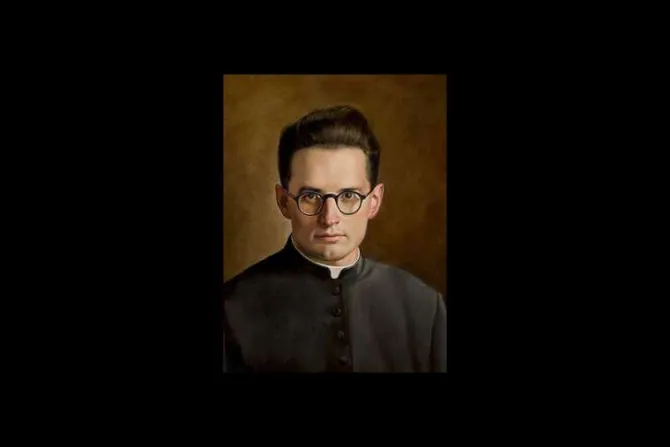Szombathely, Hungary, May 1, 2018 / 11:46 am
Fr. János Brenner, a Cistercian Hungarian priest who was martyred in the 1950s, was beatified May 1. The beatification took place in Szombathely, Hungary, the same location where the Communist government had tried to prevent the faithful from attending Brenner's funeral 60 years ago.
Brenner was born on Dec. 27, 1931 in Szombathely, Hungary. He attended Catholic schools run by the Cistercian order for several years until the nationalization of schools by the communist government which came to power after World War II as part of the Eastern Bloc.
He was accepted as a novice to the Cistercian order in Zirc in 1950, and took the name Br. Anastasius (Anasztáz).
However, only a few months after Brenner began formation, the communist government began suppressing religious houses. To protect the men in formation, the novice master moved the young brothers from the abbey to private apartments, where they hoped to continue formation in secret.
It was around this time that Brenner, along with a few other novices, moved to the local seminary to begin studying to become a priest, while continuing with his Cistercian formation through correspondence.
Despite the dangers and religious oppression going on around him, journal entries from Brenner at the time display a deep trust in God and a strong desire to do his will.
"There is no greater joy than when man, who is nothing, can be even more annihilated in Christ and immerse himself into the infinite world of His soul, filled with wonderful riches which are forever given over to us," he wrote in 1950.
"Even if the road is rough, I look at your pain-ridden face and follow you. I ask you only one thing: May I always fulfill most precisely what you give to me as my vocation."
Brenner took vows with the Cistercian order and then was ordained a priest in 1955.
Throughout his ministry, he was known for his willingness and readiness to serve and to sacrifice, and took as his priestly motto the verse Romans 8:28: "We know that all things work for good for those who love God, who are called according to his purpose."
Brenner was especially talented at working with youth, which made him a greater target of the communist government.
Even when he was made aware of personal threats against his life, and his bishop offered to transfer him elsewhere for his own safety, Brenner responded: "I'm not afraid, I'm happy to stay."
On the night of Dec. 14, 1957, Brenner was falsely called to give last rites to a sick person in a neighboring town, amid the reprisals for the Hungarian Revolution of 1956.
He left his home, carrying his anointing oils and the Eucharist, but was ambushed in the woods outside Rabakethely and stabbed 32 times. He was found dead the next day, still clutching the Eucharist in his hands, which has earned him the title of the "Hungarian Tarcisius" – a reference to the young third century martyr who was also killed while carrying and protecting the Eucharist.
While the communists had hoped that Brenner's death would intimidate the faithful in the area, they could not stop devotion to Brenner's memory. The Chapel of the Good Pastor was built in 1989 on the spot where he died, and is a popular place of pilgrimage for people throughout the country. The dirty and bloodied surplice Brenner wore when he was killed has been preserved as a relic.
Brenner's martyrdom was acknowledged by Pope Francis in November 2017.
(Story continues below)


